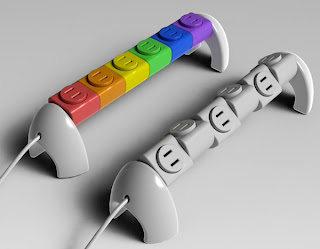"Inversion" or "the other way around" is a surprisingly common but important inventive principle. You'd probably come across very good examples of this principle everyday and not know it.
The refrigerator that I grew up with was a simple top freezer-type (if you're stumped on what is a top freezer, this site might help). There never was much drama with a refrigerator, as it's basically food in and food out, with the occasional rotten food out. The frozen food and ice-cream goes on top, the perishables goes to the bottom. This is until I had to buy one of my own. The myriad of choices between price, design and technology makes fridge-hunting a humbling experience. I had my mind set on getting the biggest, cheapest, feature-packed fridge that I could get, but throughout the fridge-hunting, the one thing that struck me was a bottom freezer design.
I have NEVER come across a bottom freezer design in my life, or at least never noticed it. To me there was never a problem with having the frozen food on top...until I read the brochures. Having a bottom freezer meant:
1. Better access to frozen food. Frozen food tend to be more heavy, so you didn't have to keep lifting heavy stuff, putting less strain to your back. Also, you didn't have to stretch to reach the higher items.
2. Better access to perishables. In general we open the refrigerator door more often than the freezer, to get the milk, an apple, to check for snacks, etc. So it makes sense that these items are located nearer to our eyes and arms for fast access.
3. Less crouching or bending over. As we access the milk more often than the frozen turkey, keeping the frozen food at the bottom reduces that activity. Some bottom freezer design comes with drawer-style doors, so you don't even have to crouch just to look at the items.
4. Efficiency. Hot air rises to the top, so having the warmer compartment at the top reduces energy consumption.
It is amazing how much extra benefit you get when you basically just turn your refrigerator upside-down. So now whenever I have a problem (or a contradiction) that needs solving, I'd always try to imagine what happens when something is reversed or turned the other way around. This gives me great insights into things that otherwise I wouldn't have thought about in my ideation process.
Suddenly it was crystal clear...I now have a bottom freezer-type refrigerator.










